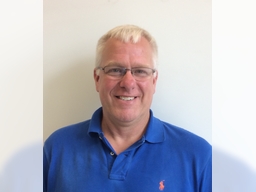PhD Defense: Kenneth Pryor
Location
Physics : 401
PhD Defense: Kenneth Pryor – Online Event
Date & Time
August 1, 2022, 12:00 pm – 3:00 pm
Description
ADVISORS: Dr. Belay Demoz
TITLE: Examination of the Physical Process of Severe Convective Windstorms
ABSTRACT: Downbursts are strong downdrafts that induce an outburst of damaging winds at or near the ground, and a microburst is a very small downburst with an outflow diameter of less than 4 km and a lifetime of fewer than 5 minutes. The dangers posed by convective storm-generated downbursts have been extensively documented. Severe windstorms (i.e., widespread convective wind gusts > 25.7 m s−1 (50 kt)) resulting from mesoscale convective systems (MCS) cause significant disruption to society, including widespread power outages, tree and structural damage, and transportation accidents that affect multi-state regions and metropolitan areas along their track. A derecho, defined as a long-lived, widespread severe convective windstorm, is composed of numerous downbursts (intense localized storm downdrafts) organized into clusters or families of clusters. Derechos can produce winds above hurricane force along a track that may exceed several hundred kilometers. This paper shows how ground and satellite-based instrumentation can be combined to monitor windstorms over the American Midwest and Atlantic coastal region. Convective windstorm potential has been expressed as a grouping of stability parameters that are relevant for downburst generation. These include the lower-to-mid-tropospheric temperature and equivalent potential temperature (theta-e) lapse rates, vertical relative humidity differences, and the amount of convective available potential energy (CAPE) in the troposphere. Accordingly, this research effort will provide background on convective windstorms and a three-step process that monitors the ambient environment that leads to the formation of severe storms and the specific characteristics of those that produce downburst winds. Collection and exploitation of surface-based observations, ground-based microwave and radio profiler measurements, and satellite-based 2-D plan view images all serve as building blocks in the conceptual modeling process. Modification of sounding profiles with surface observations of temperature and humidity is an additional step that results in improved representation of the ambient environment.
Meeting link:
https://umbc.webex.com/umbc/j.php?MTID=m5a02208a8d38aa7c85e6ab03b752d89d
Meeting number:
2621 013 6893
Password:
Please obtain your meeting password from your host.
Join by video system
Dial 26210136893@umbc.webex.com
You can also dial 173.243.2.68 and enter your meeting number.
Join by phone
+1-202-860-2110 United States Toll (Washington D.C.)
Access code: 2621 013 6893
TITLE: Examination of the Physical Process of Severe Convective Windstorms
ABSTRACT: Downbursts are strong downdrafts that induce an outburst of damaging winds at or near the ground, and a microburst is a very small downburst with an outflow diameter of less than 4 km and a lifetime of fewer than 5 minutes. The dangers posed by convective storm-generated downbursts have been extensively documented. Severe windstorms (i.e., widespread convective wind gusts > 25.7 m s−1 (50 kt)) resulting from mesoscale convective systems (MCS) cause significant disruption to society, including widespread power outages, tree and structural damage, and transportation accidents that affect multi-state regions and metropolitan areas along their track. A derecho, defined as a long-lived, widespread severe convective windstorm, is composed of numerous downbursts (intense localized storm downdrafts) organized into clusters or families of clusters. Derechos can produce winds above hurricane force along a track that may exceed several hundred kilometers. This paper shows how ground and satellite-based instrumentation can be combined to monitor windstorms over the American Midwest and Atlantic coastal region. Convective windstorm potential has been expressed as a grouping of stability parameters that are relevant for downburst generation. These include the lower-to-mid-tropospheric temperature and equivalent potential temperature (theta-e) lapse rates, vertical relative humidity differences, and the amount of convective available potential energy (CAPE) in the troposphere. Accordingly, this research effort will provide background on convective windstorms and a three-step process that monitors the ambient environment that leads to the formation of severe storms and the specific characteristics of those that produce downburst winds. Collection and exploitation of surface-based observations, ground-based microwave and radio profiler measurements, and satellite-based 2-D plan view images all serve as building blocks in the conceptual modeling process. Modification of sounding profiles with surface observations of temperature and humidity is an additional step that results in improved representation of the ambient environment.
Meeting link:
https://umbc.webex.com/umbc/j.php?MTID=m5a02208a8d38aa7c85e6ab03b752d89d
Meeting number:
2621 013 6893
Password:
Please obtain your meeting password from your host.
Join by video system
Dial 26210136893@umbc.webex.com
You can also dial 173.243.2.68 and enter your meeting number.
Join by phone
+1-202-860-2110 United States Toll (Washington D.C.)
Access code: 2621 013 6893
